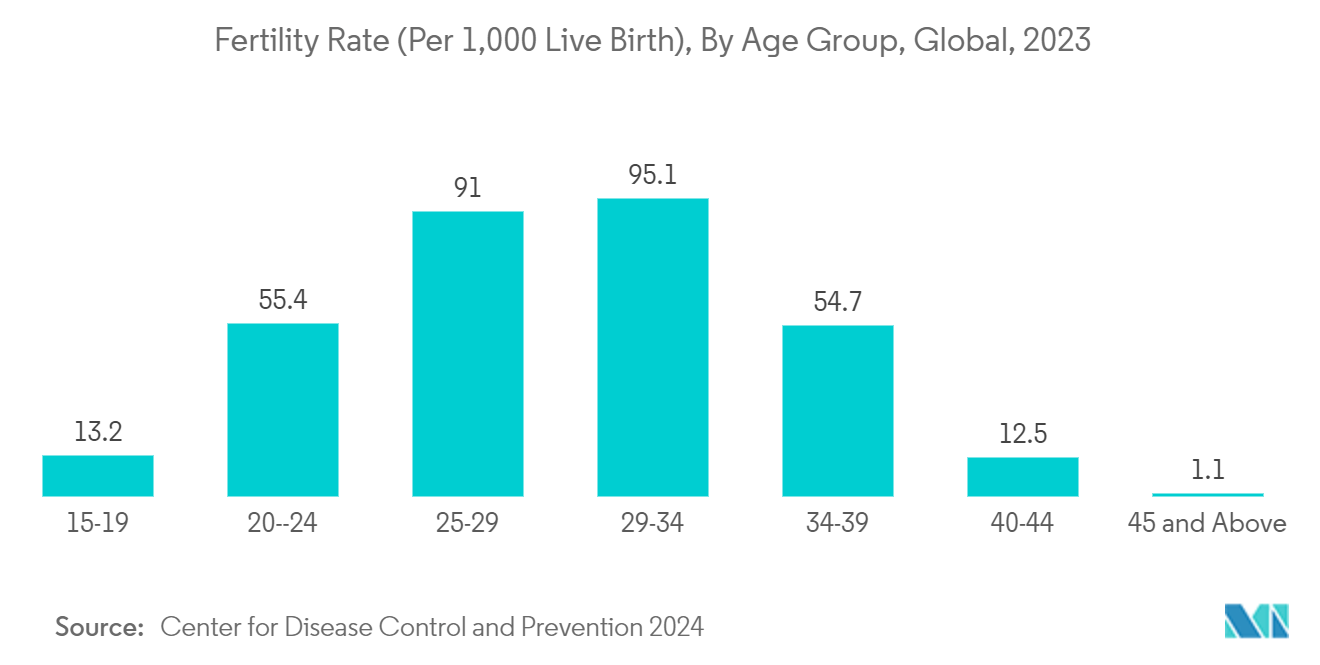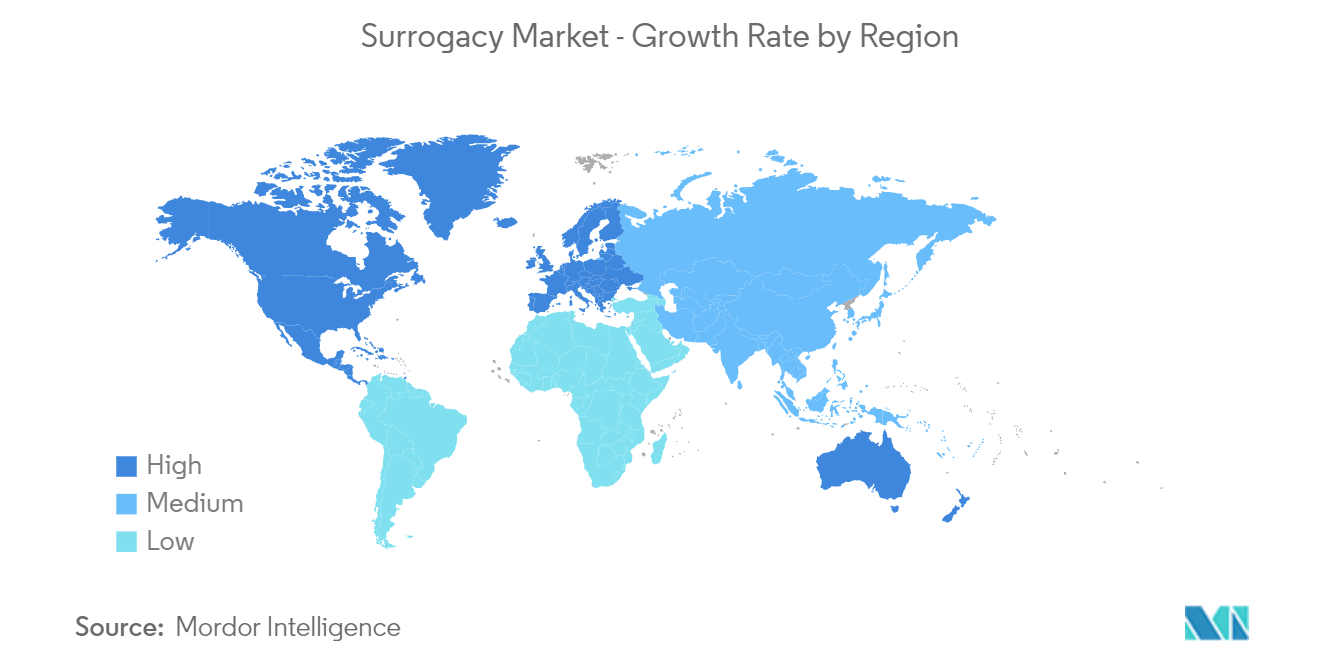Market Trends of Surrogacy Industry
In-Vitro Fertilization is Expected to Witness Healthy Growth During the Forecast Period
In-vitro fertilization (IVF) is poised for significant growth during the forecast period, driven by high procedural success rates and continuous advancements. The increasing number of IVF treatments has led more insurance providers to cover these procedures. According to the American Society of Reproductive Medicine in March 2023, the number of babies born from IVF increased from 89,208 in 2021 to 91,771 in 2022, representing 2.5% of all births in the United States. This rise in cycles indicates a strong demand for fertility services, despite challenging legislation and political threats. In the United States, IVF cycles at Society for Assisted Reproductive Technology member clinics increased by over 6%, from 368,502 in 2021 to 389,993 in 2022. This trend is expected to drive segment growth during the forecast period.
Government organizations are actively promoting awareness of IVF and its benefits. Some governments are offering financial assistance for surrogacy procedures, potentially increasing IVF's popularity as a primary infertility treatment. For instance, in March 2024, the Queensland government announced a USD 42.3 million package to help individuals who have experienced serious illnesses, such as cancer, access IVF treatment. Similarly, in August 2023, the Irish government allocated EUR 10 million (USD 10.85 million) to fund publicly funded IVF treatments. This initiative is expected to provide hope to many couples facing infertility and reshape the assisted reproductive technology landscape in the country. Government support for IVF treatment is anticipated to contribute to market growth during the forecast period.
In summary, the segment's growth is driven by rising infertility rates due to lifestyle changes and supportive government reimbursement policies.

North America is Expected to Hold Significant Market Share Over the Forecast Period
North America holds a significant share of the surrogacy market due to increased awareness of infertility treatments, technological advancements, government initiatives promoting surrogacy facilities, and a rising number of infertility cases.
In the United States, the rise in infertility rates is expected to drive surrogacy demand, contributing to segment growth. Provisional estimates from March 2023 by the National Center for Health Statistics under the CDC reported approximately 3.6 million births, translating to 54.4 live births per 1,000 females aged 15 to 44. However, the fertility rate decreased by 3% from 2022. This sustained decline in U.S. fertility rates over the past decades highlights the growing demand for surrogacy, which supports market expansion.
Moreover, fertility tourism is on the rise, with individuals traveling abroad for treatments due to legal restrictions, lower costs, and technological advancements in destination countries. The United States, particularly California, is a popular surrogacy destination due to its favorable laws and high-quality reproductive technology. Increased access to treatments and insurance in the region further drives market growth. For instance, a public opinion poll by the American Society for Reproductive Medicine in April 2024 indicated strong support for expanding access to in-vitro fertilization (IVF). This supportive environment and proactive initiatives are expected to increase surrogacy demand, driving market growth.
In conclusion, factors such as high infertility rates, favorable government initiatives, increasing surrogacy tourism, and favorable IVF reimbursements are expected to propel market growth during the forecast period.


